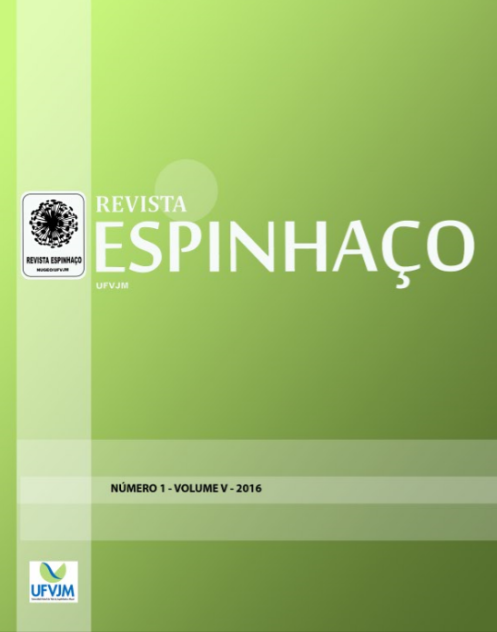Use of Artificial Neural Networks in precipitation forecasting of rainy season
DOI:
https://doi.org/10.5281/zenodo.3958064Keywords:
Climatic sceneries, climate modeling, weather forecastingAbstract
This study aims to estimate the precipitation in the rainy season in Diamantina (MG) based on precipitation of dry previous seasons, by using Artificial Neural Networks (ANN). The chronological order of the data was changed so that the dry season of and year was related to the rainy season of the next year. A part of the data was used in the ANN training and other part used to evaluate the performance of it. The used analysis was time series and the best network found was of radial basis function type. The ANN found showed an average of error of 10%. The average precipitation of the period used in application of the network was of 1099 mm, while the average estimation was 1128 mm. The use of dry season’s data to estimate the precipitation of the rainy season presented satisfactory results and, the change of the chronological order of the dry period result in a neural network with more effective forecasting despite the unchanged one.
References
Andrade ARS, Freitas JC, Brito JIB, Guerra HOC, Xavier JF. 2009. Aplicação da probabilidade condicional e do processo de cadeia de Markov na análise da ocorrência de períodos secos e chuvosos para o município de Garanhuns, PE, Brasil. Ambiente e água, Taubaté 4 (1): 169-182.
Anochi JÁ, Silva JDS. 2009. Uso de redes neurais artificiais e teoria de conjuntos aproximativos no estudo de padrões climáticos sazonais. Revista da Sociedade Brasileira de Redes Neurais 7 (2): 83-91.
Anochi JÁ. 2015. Previsão climática de precipitação por redes neurais autoconfiguradas. Tese (Doutorado em Computação Aplicada), Instituto Nacional de Pesquisas Espaciais, São José dos Campos.
Ávila LF, Mello CR, Viola MR. 2009. Mapeamento da precipitação mínima provável para o sul de Minas Gerais. Revista Brasileira de Engenharia Agrícola e Ambiental, Campina Grande, v. 13, p. 906-915.
Castro R. 1994. Distribuição probabilística da frequência de precipitação na região de Botucatu-SP. Dissertação (Mestrado em Agronomia), Universidade Estadual Paulista, Botucatu-SP.
INSTITUTO BRASILEIRO DE GEGRAFIA E ESTATÍSTICA - IBGE. Geografia do Brasil: Região Sudeste. Rio de Janeiro: IBGE, 1977.
Menezes PL, Azevedo CAV, Eyng E, Dantas Neto J, Lima VLA. 2015. Artificial neural network model for simulation of water distribution in sprinkle irrigation. Revista Brasileira de Engenharia Agrícola e Ambiental, Campina Grande, v. 19, n. 9, p. 817-822.
Moreira MC, Cecilio RA, Pinto FAC, Pruski FF.2006. Desenvolvimento e análise de uma rede neural artificial para estimativa da erosividade da chuva para o estado de São Paulo. Revista Brasileira de Ciência do Solo, Viçosa, v. 30, p. 1069-1076.
Nimer E. 1989. Climatologia do Brasil. IBGE: Rio de Janeiro.
Oikawa RT, Ishiki HM. 2014. Modelos estatísticos e de redes neurais artificiais utilizados na predição de precipitação. Periódico Eletrônico Fórum Ambiental da Alta Paulista, São Paulo 9 (8): 19-34.
Queiroz EF, Silva RJB, Oliveira MCN. 2001. Modelo de análise de regressão periódica da precipitação mensal, da bacia atlântico sudeste, no Paraná. Pesquisa Agropecuária Brasileira, Brasília 36 (5): 727-742.
Ruivo H, Campos Velho H, Sampaio G, Ramos F. 2005. Analysis of extreme precipitation events using a novel data mining approach. American Journal of Environmental Engineering 5 (1):96–105.
Sampaio SC, Longo A J, Queiroz MMF, Gomes BM, Boas MAV, Suszek M. 2007. Estimativa e distribuição de precipitação decendiais para o estado do Paraná. Irriga, Botucatu 12 (1): 38-53.
Schaeffer DL. 1980. A model evaluation methodology applicable to environmental assessment models. Ecological Modelling, Tennessee. 8: 275-295.
Sousa W, Sousa F. 2010. Rede neural artificial aplicada à previsão de vazão da bacia hidrográfica do Rio Piancó. Revista Brasileira de Engenharia Agrícola e Ambiental. 14 (2): 173–180.
Srivastava G, Panda SN, Mondal P, Liu J. 2010. Forecasting of rainfall using ocean-atmospheric indices with a fuzzy neural technique. Journal of Hydrology 395 (3-4): 190-198.
Talei A, Chua LHC, Quek C. 2010. A Novel Application of a Neuro-Fuzzy Computational Technique in Event-Based Rainfall-Runoff Modeling. Expert Systems with Applications 37 (12): 7456-7468.
Wu CL, Chau KW, Fan C. 2010. Prediction of Rainfall Time Series Using Modular Artificial Neural Networks Coupled with Data-Preprocessing Techniques. Journal of Hydrology
(1-2):146-167.
Zhang M, Fulcher J, Scofield RA. 1997. Rainfall estimation using artificial neural network group. Neurocomputing 16 (2): 97-115.
Downloads
Published
How to Cite
Issue
Section
License
Copyright (c) 2022 Revista Espinhaço

This work is licensed under a Creative Commons Attribution-NonCommercial-NoDerivatives 4.0 International License.


